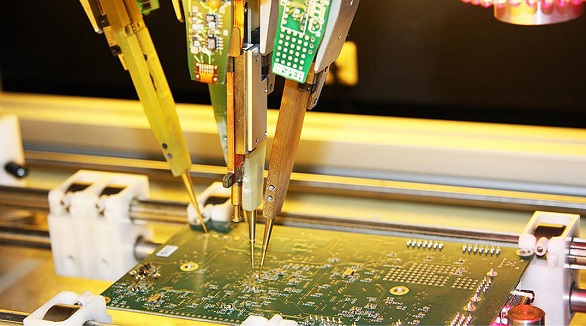Burn-In Boards
Burn-in boards are vital for testing semiconductor reliability, simulating stress to reveal defects, ensuring high-quality devices before mass production.
In the dynamic semiconductor industry, product reliability and performance are not open to compromise. The demand for perfect electronics has increased the need for thorough testing methodologies. One key player in this testing domain is the burn-in board-a highly specialized tool that plays a very critical role in ensuring the dependability of semiconductor devices. This article looks closely at the detailed aspects of burn-in boards, their application in testing, and the subtleties of their design with a focus on their importance in the semiconductor manufacturing process.
Burn-in boards are specially designed printed circuit boards that help facilitate the burn-in testing process, which is a method of evaluation that gives the semiconductor devices artificial aging. In this process, the device will be subjected to high temperature and electrical stress, simulating conditions like real-world operating conditions. These kinds of rigorous tests are necessary for uncovering early-life failures and ensuring long-term reliability of the devices before they reach mass production.

The Burn-In Process
In a typical burn-in process, semiconductor devices, normally referred to as devices under test, are securely mounted onto the burn-in board via precision-engineered sockets. These assemblies are then inserted into burn-in ovens, where they face high temperatures-usually around 125 degrees Celsius-and receive electrical signals and power. The objective is mainly to uncover hidden defects by accelerating the aging process, and there are generally three major types of burn-in tests:
Static Burn-In: High currents or voltages are applied to the DUTs without operating them. This will help in finding out potential faults due to stress without engaging functional circuits.
Dynamic Burn-In: Devices are operational under high temperature and voltage conditions, closely simulating actual use conditions to find performance-related issues early.
Test During Burn-in: This approach involves observation of the devices under application of the test vectors to guarantee their functionality and tolerance for inputs during continuous operation.
From these varied conditions, the burn-in process acts like a filtering mechanism in ensuring that only reliable devices proceed further in the chain of manufacture.
Design and Material Considerations
Burn-in boards are designed to operate in harsh conditions. Material selection becomes critical because board performance and durability depend on it:
High-Temperature Materials: For standard test temperatures of around 125 degrees Celsius, the enhanced version of FR4 can be used, while for high-temperature requirements up to 250 degrees Celsius or more, polyimide materials prove to be very resilient.
Thermal Management: The heat must be evenly distributed across the board to prevent damage to the DUTs and to make sure that aging is uniform across all the devices under test.
Socket Design: Sockets of precision are required; they need to hold DUTs securely under thermal stress without taking any risk of damage or inaccuracy in data. Ensure all materials and components meet stringent high-temperature requirements to avoid the boards themselves becoming failure points.
Challenges and Complexities
Despite their critical role, burn-in boards and associated testing processes can be a challenge. Mainly, it is the question of the human factor: manual insertions and handling during the test may show variations in results, a drop in output, and possibly defects that get overlooked. Workers must perform according to strict guidelines regarding movement and error minimization, but this increases their workload and time demands.
Modern manufacturing aims to mitigate these challenges through automation and standardization, reducing dependence on manual labor to achieve consistency and efficiency in testing.
The Importance of Selecting the Right Burn-In Board Manufacturer
Success in burn-in testing is closely related to the quality and reliability of the burn-in board. It is very important for any manufacturer to ensure that they select a partner with extensive experience in PCB design, deep understanding of material science, and a commitment to high standards of manufacture. Key considerations include the following:
Customization Capability: The provider should be able to customize the boards to meet particular testing requirements, ensuring optimal performance and reliability.
Material Expertise: The type of material selected for a high-temperature application determines the life and effectiveness of a burn-in board.
Quality Assurance: Partnership with PCBX who upholds high industrial standards in every aspect of their operations ensures that all boards will work as they should under stress conditions.
Innovation and Adaptation: Manufacturers that invest in new materials and methodologies can offer state-of-the-art solutions to their clients, matching the pace at which the industry advances.
In aligning with PCBX, clients gain not only a supplier but a partner committed to elevating the quality and reliability of their semiconductor devices.

In essence, burn-in boards provide the foundation in semiconductor testing by providing a necessary avenue of ensuring device reliability through stress-induced testing. The design and functionality indeed are an important crossroad of precision engineering and material science to ensure the unforgiving standards required to keep up the quality of modern electronics. As the semiconductor landscape continues to evolve, the role of burn-in boards will remain indispensable, underlining the timeless need for reliability in all electronic devices. By partnering with the right manufacturer, companies can rest assured that their testing infrastructures are robust, reliable, and adept at meeting the technological challenges of the future.
Hot Tags:
Contact us

If you can't find what you're looking for, please contact us.
Article

Functional testing verifies PCB functionality in simulated environments, enhancing quality and reliability, detecting faults, ensuring performance, and cost efficiency.

PCB testing ensures quality and reliability by assessing key components like lamination, copper plating, and conductivity. Methods include ICT, FPT, Burn-in, and AOI. Testing reduces bugs, time, cost, and enhances safety.

Flying Probe Testing ensures high-performance, durable PCBs and PCBAs by detecting issues like shorts and capacitance mismatches, speeding up production, and reducing costs.
